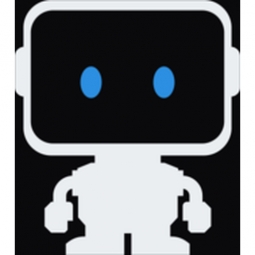公司规模
Large Corporate
地区
- America
国家
- United States
产品
- Trifacta Wrangler Pro
- DataRobot
技术栈
- Amazon S3
- Amazon Redshift
- Amazon EMR
- AWS VPC
实施规模
- Enterprise-wide Deployment
影响指标
- Cost Savings
- Customer Satisfaction
- Productivity Improvements
技术
- 分析与建模 - 机器学习
- 分析与建模 - 数据即服务
- 基础设施即服务 (IaaS) - 云计算
适用行业
- 零售
适用功能
- 商业运营
- 销售与市场营销
用例
- 欺诈识别
服务
- 数据科学服务
- 系统集成
关于客户
Consensus Corporation 是 Target 的子公司,致力于简化销售联网设备的复杂流程。该公司使用单一平台将零售商与制造商和网络运营商连接起来,实现所谓的多元化销售:将技术和服务购买捆绑在一起,例如智能手机和数据计划,或智能电视和视频流服务订阅。Consensus 使全国各地的零售店能够通过一个统一的在线平台销售这些类型的联网设备和服务。然而,销售昂贵设备和服务的零售商面临的一个主要风险是欺诈性客户活动。为了应对这一风险,Consensus 将欺诈预防作为其核心服务之一。
挑战
Consensus Corporation 是 Target 的子公司,它简化了销售联网设备的复杂流程。然而,对于销售昂贵设备和服务的零售商来说,一个主要的风险是欺诈性客户活动。为了应对这一风险,Consensus 将欺诈预防作为其核心服务之一。通过其自动化机器学习驱动的在线引擎,Consensus 可以在其零售商客户购买昂贵设备之前提醒他们注意高风险消费者。为了识别潜在的欺诈行为,Consensus 建立了一个先进的数据模型,该模型利用大量不同的数据并进行定期更新。为了能够不断完善其预测模型并更快地提醒其零售商客户注意潜在的欺诈行为,Consensus 寻找能够更快地准备这些数据以用于其机器学习模型的技术。重新设计 SQL 脚本的艰苦过程使 Consensus 平均需要长达六周的时间来更新其欺诈检测机器学习模型。此外,数据准备过程需要复杂的数据科学技术知识,这使得公司的产品和商业智能团队无法独自执行数据准备任务。
解决方案
Consensus 发现,需要更好的数据准备和快速的模型原型设计和评估,而这些不需要高级数据科学知识。起初,该公司尝试使用几种第三方数据准备解决方案,但发现它们要么昂贵、笨重,要么部署复杂。最后,Consensus 产品开发高级总监 Harrison Lynch 发现了 DataRobot 自动化机器学习平台和免费的 Trifacta Wrangler 解决方案。Trifacta 的用户友好型 UI 和 DataRobot 快速构建和部署机器学习模型的能力有助于使这两种技术在竞争中脱颖而出。Consensus 随后在 AWS 上选择了 DataRobot 和 Trifacta Wrangler Pro,以获得更强大的功能和更多的连接性,以处理更多数据并快速创建机器学习模型。Trifacta Wrangler Pro 和 DataRobot 是 AWS 部署的解决方案,可以无缝访问存储在 AWS 上的数据,包括 Amazon S3 和 Amazon Redshift。此外,Trifacta Wrangler Pro 利用 Amazon EMR (Elastic MapReduce) 来处理数据。
运营影响
数量效益

Case Study missing?
Start adding your own!
Register with your work email and create a new case study profile for your business.
相关案例.

Case Study
Improving Production Line Efficiency with Ethernet Micro RTU Controller
Moxa was asked to provide a connectivity solution for one of the world's leading cosmetics companies. This multinational corporation, with retail presence in 130 countries, 23 global braches, and over 66,000 employees, sought to improve the efficiency of their production process by migrating from manual monitoring to an automatic productivity monitoring system. The production line was being monitored by ABB Real-TPI, a factory information system that offers data collection and analysis to improve plant efficiency. Due to software limitations, the customer needed an OPC server and a corresponding I/O solution to collect data from additional sensor devices for the Real-TPI system. The goal is to enable the factory information system to more thoroughly collect data from every corner of the production line. This will improve its ability to measure Overall Equipment Effectiveness (OEE) and translate into increased production efficiencies. System Requirements • Instant status updates while still consuming minimal bandwidth to relieve strain on limited factory networks • Interoperable with ABB Real-TPI • Small form factor appropriate for deployment where space is scarce • Remote software management and configuration to simplify operations

Case Study
Digital Retail Security Solutions
Sennco wanted to help its retail customers increase sales and profits by developing an innovative alarm system as opposed to conventional connected alarms that are permanently tethered to display products. These traditional security systems were cumbersome and intrusive to the customer shopping experience. Additionally, they provided no useful data or analytics.

Case Study
How Sirqul’s IoT Platform is Crafting Carrefour’s New In-Store Experiences
Carrefour Taiwan’s goal is to be completely digital by end of 2018. Out-dated manual methods for analysis and assumptions limited Carrefour’s ability to change the customer experience and were void of real-time decision-making capabilities. Rather than relying solely on sales data, assumptions, and disparate systems, Carrefour Taiwan’s CEO led an initiative to find a connected IoT solution that could give the team the ability to make real-time changes and more informed decisions. Prior to implementing, Carrefour struggled to address their conversion rates and did not have the proper insights into the customer decision-making process nor how to make an immediate impact without losing customer confidence.

Case Study
Ensures Cold Milk in Your Supermarket
As of 2014, AK-Centralen has over 1,500 Danish supermarkets equipped, and utilizes 16 operators, and is open 24 hours a day, 365 days a year. AK-Centralen needed the ability to monitor the cooling alarms from around the country, 24 hours a day, 365 days a year. Each and every time the door to a milk cooler or a freezer does not close properly, an alarm goes off on a computer screen in a control building in southwestern Odense. This type of alarm will go off approximately 140,000 times per year, equating to roughly 400 alarms in a 24-hour period. Should an alarm go off, then there is only a limited amount of time to act before dairy products or frozen pizza must be disposed of, and this type of waste can quickly start to cost a supermarket a great deal of money.

Case Study
Supermarket Energy Savings
The client had previously deployed a one-meter-per-store monitoring program. Given the manner in which energy consumption changes with external temperature, hour of the day, day of week and month of year, a single meter solution lacked the ability to detect the difference between a true problem and a changing store environment. Most importantly, a single meter solution could never identify root cause of energy consumption changes. This approach never reduced the number of truck-rolls or man-hours required to find and resolve issues.








